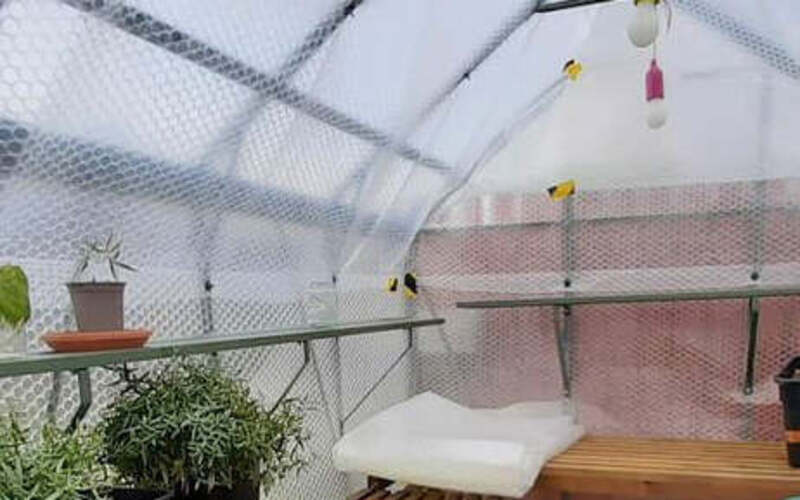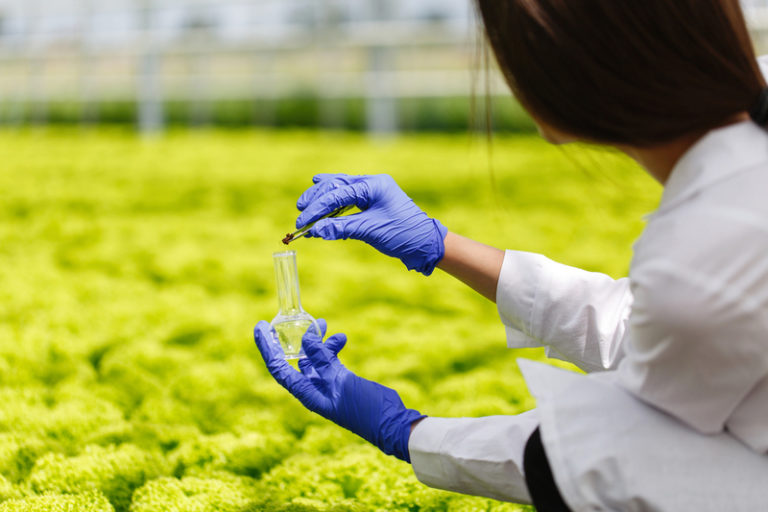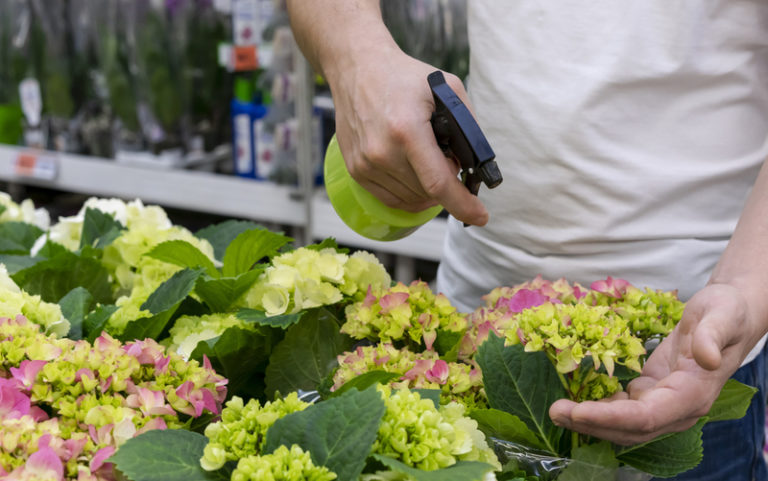Horticultural Bubble Wrap: The Ultimate Solution for Protecting Your Plants from the Elements
Horticultural bubble wrap is a plastic material that provides an extra layer of protection for plants, especially during extreme weather conditions. In this article, we will discuss the benefits of using horticultural bubble wrap, the types available, factors to consider when choosing one, how to install it, and maintenance tips.
Benefits of using horticultural bubble wrap
Horticultural bubble wrap is made of plastic and helps plants in a number of ways, especially when the weather is bad. Here are some of the key benefits of using horticultural bubble wrap:
Protection from frost damage: Horticultural bubble wrap provides an extra layer of insulation for plants, which can protect them from frost damage. Frost can do a lot of damage to plants that are not hardy, but horticultural bubble wrap can stop this from happening.
Retains heat:
Horticultural bubble wrap helps to retain heat, which is especially important in areas with colder climates. It traps air and heat to provide an extra layer of warmth for plants, which can help them grow and thrive.
Reduces water loss:
Plants lose less water when they are wrapped in horticultural bubble wrap, which is important for their health and hydration. By reducing water loss, plants are better able to retain moisture, which can help them grow and thrive.
Protects against pests:
Horticultural bubble wrap can also protect plants from pests and insects, which can be a problem for many gardeners. It creates a barrier that pests and insects cannot easily penetrate, which can help keep plants healthy and free from damage.
Increases plant growth:
By providing an extra layer of warmth and protection, horticultural bubble wrap can help increase plant growth. Horticultural bubble wrap makes it more likely for plants to grow quickly and thrive even in adverse weather.
Horticultural bubble wrap helps plants in many ways, like protecting them from frost damage, keeping heat in, preventing water loss, keeping pests away, and making plants grow faster. By using horticultural bubble wrap, gardeners can keep their plants healthy, growing well, and safe all year long.
Types of horticultural bubble wrap
There are two main types of horticultural bubble wrap available: single bubble and double bubble.
A. Single-Bubble Horticultural Bubble Wrap
Single-bubble horticultural bubble wrap is the more affordable option of the two. It is made of a single layer of polyethylene plastic with air pockets, which provides a layer of insulation for plants. Single-bubble horticultural bubble wrap is thinner than double-bubble wrap, which makes it easier to cut and manipulate, but it is also less durable.
B. Double Bubble Horticultural Bubble Wrap
Double-bubble horticultural bubble wrap is made of two layers of polyethylene plastic with air pockets between them. This creates a thicker and more durable layer of insulation for plants. Double-bubble horticultural bubble wrap is more expensive than single-bubble bubble wrap, but it provides better insulation and protection for plants. It is also more resistant to tears and punctures.
In general, single-bubble horticultural bubble wrap is ideal for short-term use, such as covering plants during a sudden cold snap. It is also a good option for gardeners who are on a budget. Double-bubble horticultural bubble wrap is better suited for long-term use, such as for covering greenhouses or cold frames, as it provides more durable protection for plants.
When choosing between the two types of horticultural bubble wrap, it is important to consider the specific needs of your plants and the climate in your area. Some plants may need more insulation and protection than others, and some climates may need more durable materials to withstand extreme weather conditions.
How to install horticultural bubble wrap
Installing horticultural bubble wrap is a relatively easy process that can be done in a few simple steps. Here’s how to install horticultural bubble wrap:
Prepare the plant bed:
Before installing horticultural bubble wrap, make sure that the plant bed is clean and free from debris. Remove any dead leaves or branches from the plants and make sure that the soil is evenly spread.
Unroll the bubble wrap:
Roll out the horticultural bubble wrap and cut it to the appropriate size. Leave enough wrap to cover the entire plant, with a little extra for securing the wrap in place.
Secure the bubble wrap:
Once the bubble wrap is cut to size, lay it over the plant bed and secure it in place. Use clips or pins to hold the bubble wrap in place, ensuring that it is snug and tight around the plants. Be careful not to puncture the bubble wrap with the clips or pins.
Cut holes for ventilation:
If you are covering a greenhouse or cold frame, it is important to cut holes in the bubble wrap to provide ventilation for the plants. Use a sharp pair of scissors to cut small holes in the bubble wrap, being careful not to damage the plants.
Check the bubble wrap regularly:
Regularly check the bubble wrap to make sure it is still there and unharmed by animals or wind. If the bubble wrap breaks, you should replace it as soon as possible to keep the plants safe.
By following these steps, you can put horticultural bubble wrap around your plants to protect them from harsh weather and other environmental factors. With the proper installation, your plants will thrive and grow, even in the most challenging of conditions.
Maintenance and care of horticultural bubble wrap
Horticultural bubble wrap doesn’t need much care or maintenance, but there are a few simple steps you should take to make sure it keeps protecting your plants well. Here are some tips for maintaining and caring for horticultural bubble wrap:
Clean the bubble wrap regularly:
Dirt and debris can accumulate on the surface of the bubble wrap, which can reduce its effectiveness at protecting your plants. Use a soft cloth or sponge to gently wipe down the surface of the bubble wrap, removing any dirt or debris that has accumulated.
Check for damage:
Regularly inspect the bubble wrap for any tears or punctures that may have occurred. If you notice any damage, replace the bubble wrap as soon as possible to ensure that your plants continue to receive adequate protection.
Secure the bubble wrap:
Check the clips or pins that are holding the bubble wrap in place, making sure that they are secure and not at risk of falling off. Replace any clips or pins that are damaged or missing.
Remove the bubble wrap during warmer months:
During warmer months, when there is no risk of frost or extreme cold, it is best to remove the bubble wrap to allow your plants to receive natural light and ventilation. Store the bubble wrap in a dry and cool place to prevent damage.
Replace the bubble wrap regularly:
Over time, horticultural bubble wrap can become brittle and less effective at protecting your plants. It is recommended to replace the bubble wrap every few years to ensure that your plants receive the best possible protection.
By following these simple tips for care and maintenance, you can make sure your horticultural bubble wrap stays in good shape and keeps protecting your plants well. With the proper care, your plants will thrive and grow, even in the most challenging of conditions.
Conclusion
Horticultural bubble wrap is a useful tool for protecting plants from extreme weather conditions, retaining heat, and reducing water loss. It is important to choose the right type of bubble wrap for your needs and to properly maintain and care for it in order to get the most out of its benefits. By taking the time to install and maintain horticultural bubble wrap, gardeners can enjoy healthy and thriving plants all year round.
FAQ:
Q. What is horticultural bubble wrap?
Ans: Horticultural bubble wrap is a plastic material used to protect plants, especially during extreme weather conditions. It provides an extra layer of insulation, retains heat, reduces water loss, protects against pests, and increases plant growth.
Q. Can horticultural bubble wrap be reused?
Ans: Yes, horticultural bubble wrap can be reused as long as it is still in good condition.
Q. How long does horticultural bubble wrap last?
Ans: How long horticultural bubble wrap lasts depends on things like how often it is used, how much sun it gets, and how well it is taken care of. With proper care and maintenance, it can last for several seasons.
Q. Can horticultural bubble wrap be used for outdoor plants?
Ans: Yes, horticultural bubble wrap can be used for outdoor plants, but it may not be as effective as other types of protection, such as fleece covers or cloches.
Q. Is horticultural bubble wrap eco-friendly?
Ans: Bubble wrap is made from plastic and is not considered eco-friendly. However, some manufacturers offer biodegradable options.
Also Read:
Agriculture Sun Shade Net: The Key to Growing Healthy and Thriving Crops







